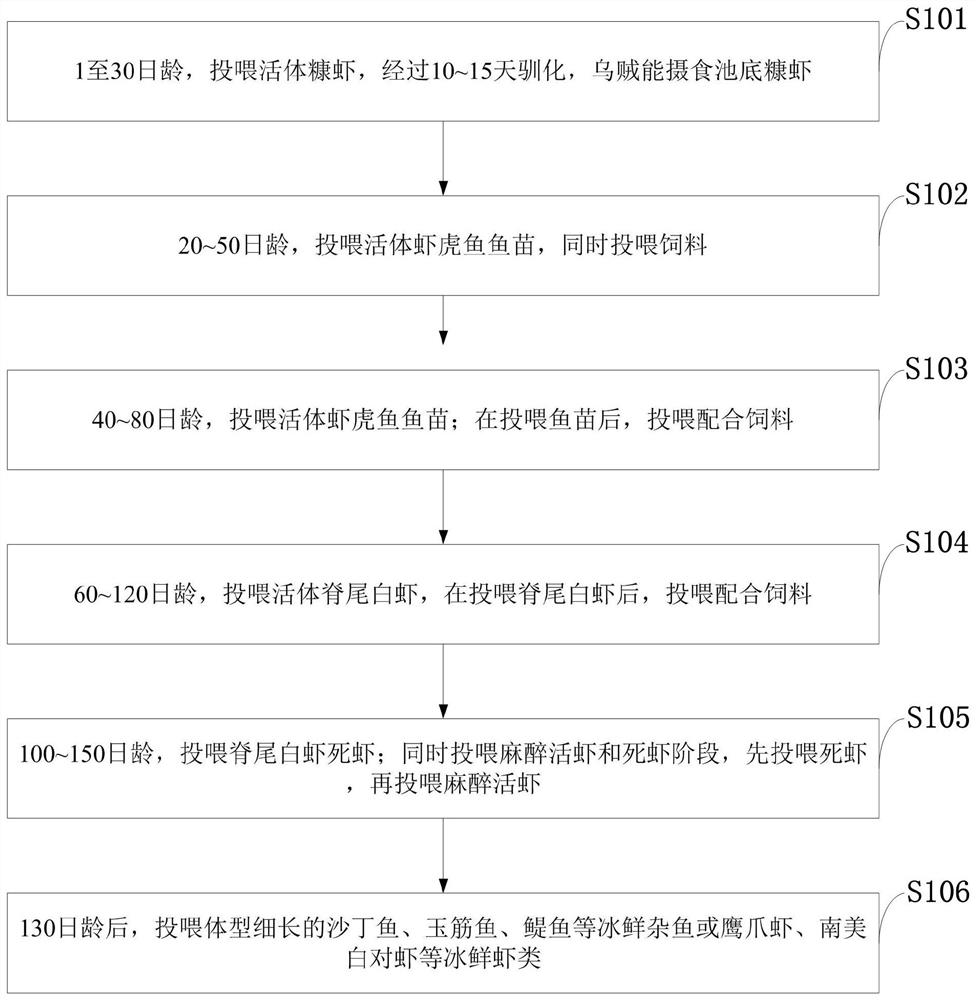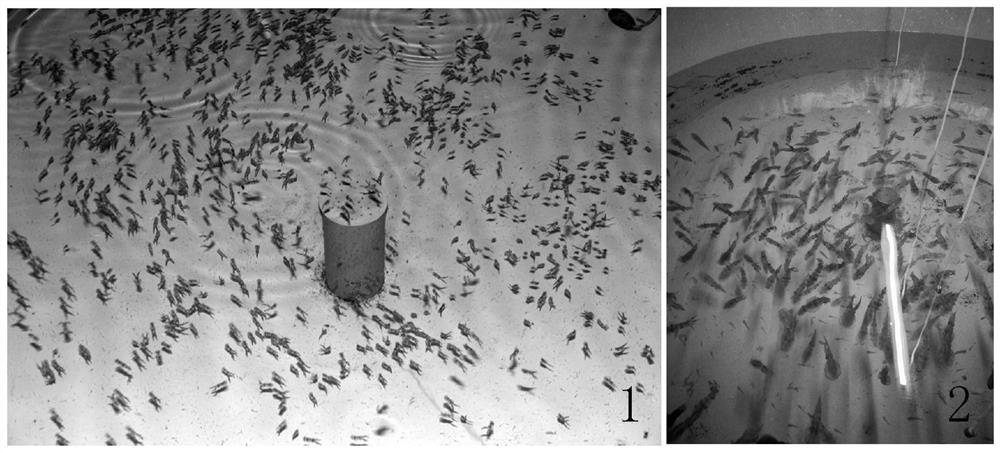Method for iced fresh bait converting and live bait feeding for bigfin reefsquids
A chilled squid technology, applied in the field of aquaculture, can solve the problems of death, poor eating chilled bait, inactivity, etc., and achieve the effects of increasing sinking distance, prolonging sinking time, and avoiding waste
- Summary
- Abstract
- Description
- Claims
- Application Information
AI Technical Summary
Problems solved by technology
Method used
Image
Examples
Embodiment 1
[0056] Live Mysis prawns were fed from 1 to 30 days old, and the water level was 50-60 cm. After 5-10 minutes after feeding, the water level was reduced to 15-20 cm. ) Co., Ltd. produces sea boy juvenile fish feed 1# or a small amount of Artemia nauplii with a particle size of 0.2-0.25 mm. 20-50 days old, feed live goby fry with a total length of 1.0-1.5cm, the water level is 50-60cm when feeding, and reduce the water level to 15-20cm 5-10min after feeding the fry, and feed a small amount at the same time Sea Tong juvenile feed 2# and 3# compound feed with a particle size of 0.25-0.58mm. At the age of 40-80 days, live goby fry with a total length of 1.5-2.5 m after cold anesthesia were fed. Before feeding, collect goby fry and put them in cold water (the cooling range is about 8-10°C), soak for 0.5-1min for cold anesthesia, and the water level rises to 60-70cm when feeding, After 20 minutes, feed a small amount of 3# and 4# compound feeds with a particle size of 0.36-0.84 mm...
Embodiment 2
[0059] The difference from Example 1 is that the bait is live mysis and white prawn, instead of raising and lowering the water level and feeding the compound feed to increase the frequency of bait activity, etc. to domesticate the squid to feed on the bottom live bait, other conditions are the same . According to statistics, the survival rate of seedlings with a trunk length of 3 to 4 cm reaches 40%, and the survival rate of growing up reaches 20%.
Embodiment 3
[0061] The difference from Example 1 is that the bait is live mysis and white prawn, instead of cold anesthesia and raising the water level to transform and acclimatize the frozen bait of Cuttlefish laiburi, and the other conditions are the same. According to statistics, the survival rate of seedling cultivation with a trunk length of 3-4 cm reaches 50%, and the survival rate of growing-up reaches 30%.
PUM
| Property | Measurement | Unit |
|---|---|---|
| Length | aaaaa | aaaaa |
Abstract
Description
Claims
Application Information
 Login to View More
Login to View More - R&D Engineer
- R&D Manager
- IP Professional
- Industry Leading Data Capabilities
- Powerful AI technology
- Patent DNA Extraction
Browse by: Latest US Patents, China's latest patents, Technical Efficacy Thesaurus, Application Domain, Technology Topic, Popular Technical Reports.
© 2024 PatSnap. All rights reserved.Legal|Privacy policy|Modern Slavery Act Transparency Statement|Sitemap|About US| Contact US: help@patsnap.com










